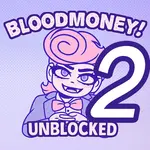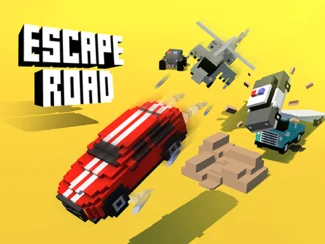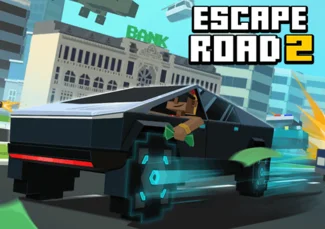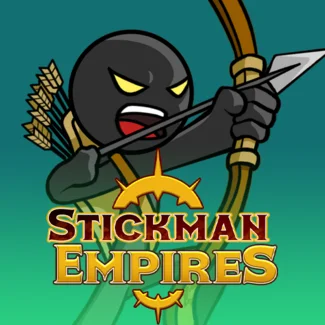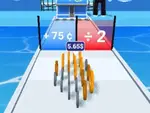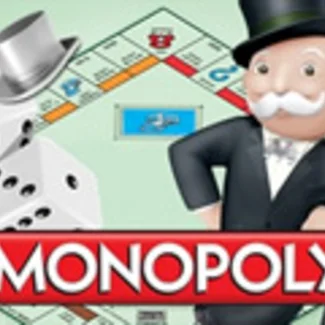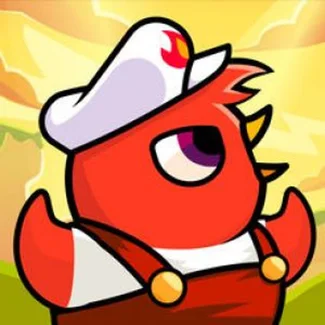
🔥Hot Games
View AllDrop The Cat
Challenge your strategic thinking in this engaging drop-and-match puzzle game! Plan each move carefully, drop colorful blocks to create matching combinations, and clear the board efficiently through clever positioning and timing.

What is Drop The Cat? A Strategic Matching Puzzle
Drop The Cat is a color-matching puzzle game combining physics-based dropping mechanics with strategic pattern matching. Players control where colored blocks fall onto the game board, then must match three or more identical colors to clear them and complete level objectives. The core gameplay loop requires analyzing the board state, planning optimal drop positions, and executing matches that maximize points while clearing required colors. The puzzle challenges demand forward-thinking strategy rather than reflexes. Before dropping any block, successful players scan the board for potential matches and plan how the new piece will create clearing opportunities. Poor placement fills the board inefficiently, while strategic drops set up chain reactions clearing multiple groups simultaneously. This creates satisfying moments when careful planning yields perfect sequences. Each level presents specific goals—clear certain colors, reach target scores, or eliminate all blocks within move limits. Varied objectives keep puzzles fresh across hundreds of stages. The difficulty progression introduces new mechanics gradually, ensuring players build skills systematically. While the cat theme adds charm, the core experience is pure strategic puzzle solving that engages analytical thinking skills.
Strategic Guide to Puzzle Mastery

Learn efficient techniques for solving challenging levels.
Phase 1 - Understand Basic Controls: Move your mouse or finger to position the upcoming block horizontally across the top of the board. Click or tap to release the block, which falls straight down following physics. Blocks stack on existing pieces or the board bottom. Simple mechanics but precise positioning matters significantly.
Phase 2 - Learn Matching Rules: Three or more identical colors touching vertically or horizontally will clear from the board. Some levels accept diagonal matches—check level rules. Cleared blocks disappear, causing pieces above to fall and potentially trigger additional matches. Understanding cascade mechanics helps plan multi-step clears.
Phase 3 - Analyze Before Dropping: Don't rush. Examine the current board state before each drop. Identify existing color clusters and determine where your next piece creates matches. Look for opportunities to set up future matches with strategic placement. Planning two or three moves ahead dramatically improves efficiency.
Phase 4 - Prioritize Level Objectives: Different levels require different strategies. Score-focused levels reward large matches and combos. Color-specific objectives demand prioritizing certain hues over others. Move-limited puzzles require maximum efficiency per drop. Always align your strategy with the current objective rather than playing randomly.
Phase 5 - Create Combo Opportunities: Position blocks to trigger chain reactions where one match causes pieces to fall and create subsequent matches automatically. Combos multiply points significantly and help achieve challenging score requirements. Learning to recognize combo setups separates advanced players from beginners.
Phase 6 - Manage Power-Ups Strategically: Save powerful abilities for genuinely difficult situations rather than wasting them on easy sections. A well-timed power-up can salvage seemingly impossible boards. However, don't hoard them unnecessarily—using them at optimal moments is better than finishing with unused resources.
Phase 7 - Handle Difficult Levels: When stuck on a challenging stage, analyze why previous attempts failed. Did you run out of moves? Fill the board poorly? Miss a critical match opportunity? Identify the specific problem then adjust strategy accordingly. Sometimes restarting early when you recognize poor positioning saves time versus struggling through bad setups.
Phase 8 - Track Performance Metrics: Monitor your match efficiency, combo frequency, and power-up usage. Improving these metrics naturally leads to better level completion. Set personal goals like achieving three-star ratings or completing levels with moves remaining. Measurable progress motivates continued skill development.
Strategic Puzzle Mechanics
Physics-Based Dropping System
Control where colored blocks fall using precise mouse positioning and timing. Blocks obey realistic physics, stacking naturally based on gravity and existing pieces. Understanding drop trajectories is essential—poor placement creates difficult situations while strategic drops set up powerful combinations. The physics engine creates emergent gameplay where careful planning yields better results than random dropping.
Color Matching Mechanics
Clear blocks by aligning three or more identical colors vertically, horizontally, or in certain patterns depending on level rules. Larger matches generate bonus points and special effects. Advanced players chain multiple matches in sequence for combo multipliers that dramatically increase scores. Pattern recognition skills improve naturally as you learn which color arrangements create the most efficient clears.
Progressive Level Design
Each stage introduces new challenges requiring adapted strategies. Early levels teach basic matching concepts with simple boards. Later stages add obstacles, limited moves, specific color requirements, and complex board shapes demanding careful planning. Difficulty curves ensure steady skill progression without sudden frustrating spikes. Completing challenging levels provides genuine accomplishment.
Power-Up Optimization
Unlock special abilities that clear specific colors, destroy obstacles, or reshuffle problematic boards. Strategic power-up usage separates efficient players from strugglers. Saving power-ups for critical moments versus using them immediately involves risk-reward calculations. Learning when each power-up type provides maximum value is key to mastering difficult levels efficiently.
Puzzle Strategy FAQ
What type of puzzle game is Drop The Cat?
This is a physics-based color-matching puzzle game. You drop colored blocks onto a board using gravity mechanics, then clear them by matching three or more identical colors. It combines elements from falling-block puzzlers and match-3 games, requiring both precise positioning and pattern recognition skills. The strategic depth comes from planning drop positions that create optimal matching opportunities.
How difficult are the puzzles?
Difficulty starts very accessible for new players with simple matching requirements and generous move limits. As you progress, levels introduce limited moves, specific color quotas, obstacles blocking placements, and complex board shapes. The curve is well-designed—challenges increase gradually without frustrating jumps. Most players will find early levels relaxing while later stages demand genuine strategic thinking and planning.
How do I achieve perfect three-star ratings?
Three-star performance typically requires completing levels efficiently with high scores or moves remaining. Focus on creating large matches and combos rather than minimal matches. Plan moves that set up chain reactions. Use power-ups strategically to maximize their impact. Sometimes achieving perfect ratings requires replaying levels after learning optimal solutions through initial attempts. Not every level demands perfection—focus on mastering mechanics first.
What should I do when stuck on a level?
First, identify why you're failing—running out of moves, not clearing required colors, or poor board management. Adjust strategy based on the specific problem. Try different drop patterns rather than repeating the same approach. Consider using saved power-ups for difficult sections. Take breaks if frustrated—returning with fresh perspective often reveals solutions you missed. Some levels have multiple valid solutions, so experiment with alternative approaches.
How do combo chains work exactly?
Combos occur when clearing one match causes blocks to fall and create additional matches automatically. For example, clearing bottom blocks might drop top blocks into new matching positions. Each sequential match in the chain multiplies your points. Creating deliberate combos requires visualizing how the board will look after your current match clears. Advanced players plan several steps ahead to engineer maximum chain reactions.
What power-ups exist and when should I use them?
Common power-ups include color clearers removing all blocks of one hue, obstacle destroyers eliminating blockers, and board shuffles rearranging pieces. Use color clearers when you need specific colors to meet objectives. Deploy obstacle destroyers when blockers prevent critical matches. Activate shuffles when the board reaches an unworkable state. Save powerful abilities for genuinely difficult situations rather than easy sections where they're unnecessary.
How can I complete levels with fewer moves?
Efficiency comes from planning matches that clear maximum blocks per drop. Look for opportunities to create matches that will cascade into additional matches. Prioritize larger matches over minimal three-block clears. Position drops that simultaneously advance multiple objectives. Sometimes using one move to set up a powerful future match is more efficient than clearing immediately. Analyze your replay attempts to identify wasted moves.
What actions generate the most points?
Larger matches score more than minimal matches. Combo chains provide significant multipliers—each sequential match increases the multiplier. Clearing difficult obstacles often awards bonus points. Completing levels with moves remaining grants finishing bonuses. Focus on combo creation and large matches rather than many small matches if maximizing score is your goal. Some levels specifically reward different actions, so adapt to each stage's scoring system.
Is this completely free or are there purchases?
The core game is free to play through your browser without downloads or required payments. You can access all levels and mechanics without spending money. Some versions may offer optional purchases for extra power-ups or hints, but they're not necessary for completion. Free players can achieve everything through skill and persistence. The puzzle-solving experience remains fully accessible regardless of payment.
How do I improve my puzzle-solving skills?
Improvement comes from recognizing patterns and developing strategic thinking. Analyze each level before acting rather than dropping randomly. Review failed attempts to understand what went wrong. Watch how matches cascade and learn to predict fall patterns. Practice planning multiple moves ahead instead of focusing only on immediate matches. Study three-star solutions if available to learn optimal strategies. Consistent play naturally builds pattern recognition and strategic planning abilities.




